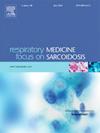持续气道正压对阻塞性睡眠呼吸暂停患者心脏代谢风险因素的影响:系统回顾和荟萃分析。
IF 3.5
3区 医学
Q2 CARDIAC & CARDIOVASCULAR SYSTEMS
引用次数: 0
摘要
目的心脏代谢风险因素(CMRFs)在心血管疾病的发生和发展中起着至关重要的作用。阻塞性睡眠呼吸暂停(OSA)会导致 CMRFs 异常。持续气道正压(CPAP)是一种广泛用于治疗 OSA 的方法。本系统综述和荟萃分析旨在研究 CPAP 对 OSA 患者 CMRFs 的影响:方法:对 PubMed、Cochrane Library、Scopus、Web of Science 和 Embase 进行检索,寻找截至 2023 年 12 月的随机对照试验。使用 Cochrane Bias Risk Tool 2.0 评估了纳入研究的质量,并使用 Stata15.1 软件进行了荟萃分析。荟萃分析的效应大小用加权平均差(WMD)和95%置信区间(CI)表示:共分析了 52 项研究,10104 名参与者。结果显示,CPAP 能显著降低收缩压(WMD:-2.04mmHg;95%CI:-3.56 至 -0.51)、舒张压(WMD:-1.40mmHg;95%CI:-2.36 至 -0.44)、总胆固醇(WMD:-0.27mmol/L;95%CI:-0.51 至 -0.04)、甘油三酯(WMD:-0.02 mmol/L;95%CI:-0.03 至 -0.01)和空腹血糖(WMD:-0.15 mmol/L;95%CI:-0.16 至 -0.13)。然而,使用 CPAP 后,低密度脂蛋白胆固醇、高密度脂蛋白胆固醇、腰围或体重指数均无明显变化:总之,这项荟萃分析表明,CPAP 能有效降低 OSA 患者的某些 CMRFs,为心血管疾病的预防提供了新的思路:系统综述注册:PROSPERO,标识符 CRD42023456380。本文章由计算机程序翻译,如有差异,请以英文原文为准。
Effect of continuous positive airway pressure on cardiometabolic risk factors in patients with obstructive sleep apnea: A systematic review and meta-analysis
Objective
Cardiometabolic risk factors (CMRFs) play a crucial role in the occurrence and development of cardiovascular diseases. Obstructive sleep apnea (OSA) causes abnormalities of CMRFs. Continuous positive airway pressure (CPAP) is a widely used treatment for OSA. This systematic review and meta-analysis aimed to investigate the effect of CPAP on CMRFs in patients with OSA.
Methods
A search of PubMed, Cochrane Library, Scopus, Web of Science, and Embase was conducted to find randomized controlled trials up to December 3, 2023. The quality of the studies included was evaluated using the Cochrane Bias Risk Tool 2.0, and a meta-analysis was carried out using Stata15.1 software. The effect sizes for this meta-analysis were represented as the weighted mean difference (WMD) and 95 % confidence interval (CI).
Results
A total of 52 studies with 10,104 participants were analyzed. The results showed that CPAP significantly lowered systolic blood pressure (WMD: −2.04 mmHg; 95%CI: −3.56 to −0.51), diastolic blood pressure (WMD: −1.40 mmHg; 95%CI: −2.36 to −0.44), total cholesterol (WMD: −0.27 mmol/L; 95%CI: −0.51 to −0.04), triglycerides (WMD: −0.02 mmol/L; 95%CI: −0.03 to −0.01), and fasting blood glucose (WMD: −0.15 mmol/L; 95%CI: −0.16 to −0.13) in patients with OSA. However, there was no significant change in low-density lipoprotein cholesterol, high-density lipoprotein cholesterol, waist circumference, or body mass index after CPAP.
Conclusion
In summary, this meta-analysis demonstrated that CPAP effectively reduced certain CMRFs in patients with OSA, offering new insights for cardiovascular disease prevention.
Systematic review registration
PROSPERO, identifier CRD42023456380.
求助全文
通过发布文献求助,成功后即可免费获取论文全文。
去求助
来源期刊

Respiratory medicine
医学-呼吸系统
CiteScore
7.50
自引率
0.00%
发文量
199
审稿时长
38 days
期刊介绍:
Respiratory Medicine is an internationally-renowned journal devoted to the rapid publication of clinically-relevant respiratory medicine research. It combines cutting-edge original research with state-of-the-art reviews dealing with all aspects of respiratory diseases and therapeutic interventions. Topics include adult and paediatric medicine, epidemiology, immunology and cell biology, physiology, occupational disorders, and the role of allergens and pollutants.
Respiratory Medicine is increasingly the journal of choice for publication of phased trial work, commenting on effectiveness, dosage and methods of action.
 求助内容:
求助内容: 应助结果提醒方式:
应助结果提醒方式:


